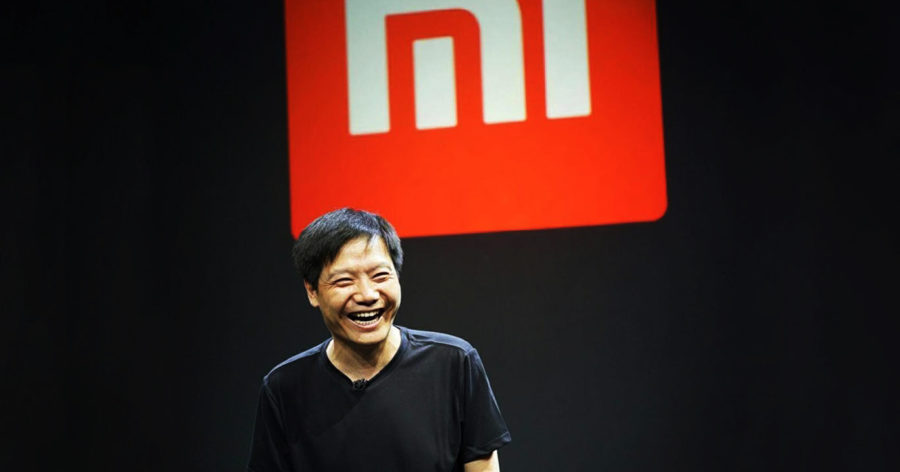
How a young programmer became one of the richest in China and built one of the most successful startups in the world.
The first material about LeEco got a lot of positive feedback, so I decided to tell you one more story, but more interesting company – Xiaomi.
Company establishment
Xiaomi was founded by businessman Lei Jun with seven other partners on April 6, 2010. We will talk separately about the main figure of the company, Lei Jun, but there are also many interesting people among the other founders:
- Bin Lin, President of the company – has worked on Windows Vista and Internet Explorer 8 and has managed mobile search development and app localization for China since 2006.
- Wanqiang Li, Head of E-Commerce at Mi.com, worked at Kingsoft as Chief Interface Designer for Software and Director of the Design Center. Participated in the development of WPS Office, Kingsoft Antivirus and Dictionary programs.
- Guangping Zhou, Director of the Mi-Phone Group – Head of the R&D Center at Motorola, worked on the creation of the phone Motorola Ming.
- Wong Jiangji, Head of Mi Wi-Fi and Mi Cloud Departments – at Microsoft led the development of analysis systems on remote servers and other B2B services, Windows Mobile for China and multimedia functions in Windows Phone 7.
- Feng Hong, Head of Department MIUI – at Google led the Calendar, Maps and 3D Street View projects, and led the Google China team to localize Google Music and Pinyin Input.
- De Liu, Head of Industrial Design and Ecosystems Departments, headed the Industrial Design Department of Beijing University of Technology.
- Chuan Wang, product director for Mi TV and Mi Box, is the creator of Thunder Stone, which supplied audio and video entertainment equipment in China.
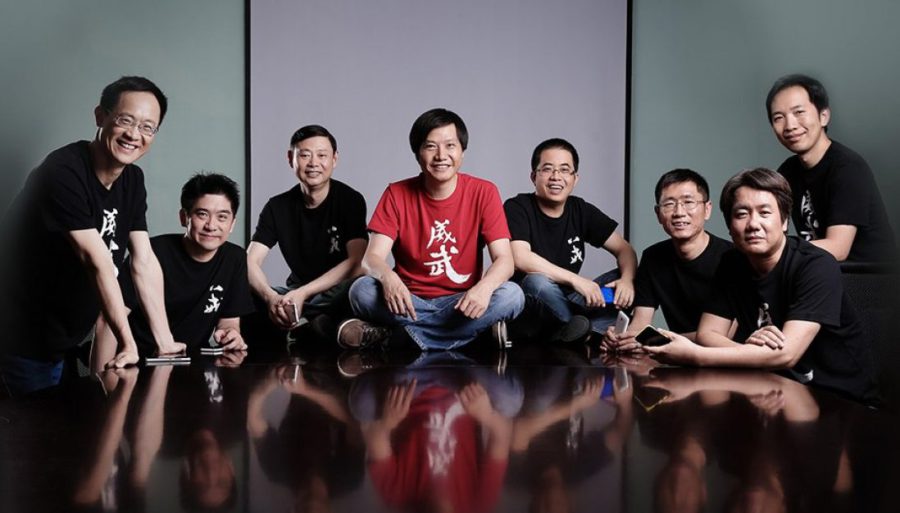
For the first 3 months they were looking for funding and developing a new mobile system based on Android. In August of the same year, the world was presented with a shell MIUI.
How MIUI was created
The official website of the mi.com company reports that there is no canonical decoding of the first two letters in the name. MI can be defined as a simple combination of 'Mobile Internet' or the more ambitious 'Mission Impossible' – as a designation of the difficulties that the company has challenged Xiaomi. But there are many other interpretations. There is no intrigue in the second half of the UI name – it's the User Interface.
The company Xiaomi with the help of MIUI did not plan to take over the world, but only to make a mobile system with analogues of Google services, which at that time did not work in China. So with an emphasis on import substitution, they were able to easily find funding from Singapore's state investment company Temasek Holdings, several private venture capital funds in China and from Qualcomm.
Only three people worked on the first versions of the system MIUI. It was developed based on Android 2.2 Froyo. Since Xiaomi did not yet have their own smartphones, their system was installed on third-party devices – the first was Google Nexus One.
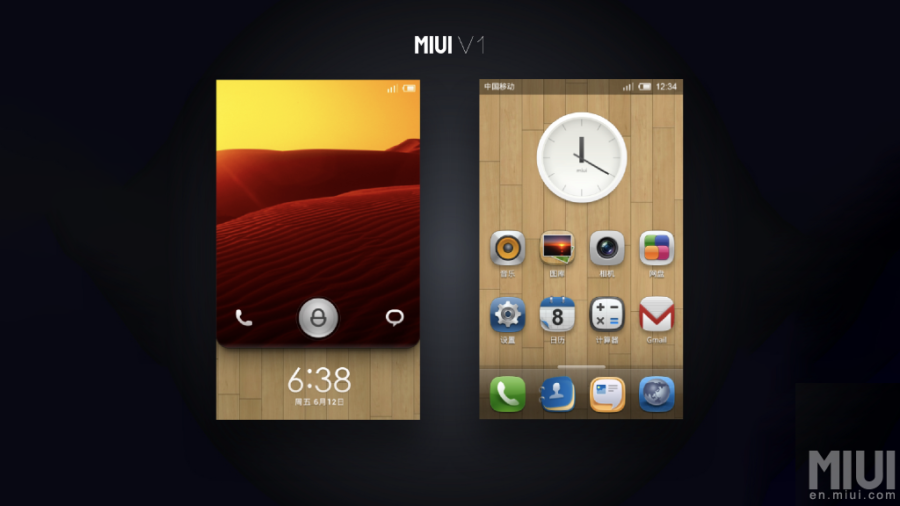
On August 16, the company Xiaomi announced the release MIUI of version 0.8.16 in the format of an open beta test. In many ways, it felt like a small team was working on the system. The developers did not even translate the system into English, let alone Russian. Despite numerous bugs, many users liked the new interface and system performance. And two months after the announcement of the system, users of the famous forum w3bsit3-dns.com translated MIUI into Russian and ports appeared for other smartphones. This is how Xiaomi got its first active fan base.
The system MIUI had many intermediate versions and was constantly evolving. The developers collected feedback and recommendations from the community to quickly fix issues and add new features.
The second version MIUI came out six months later, but it was still based on Android 2.2, although version 2.3 of Gingerbread was already out. The interface has changed in the system, there are more possibilities for customization and the 'dialer' has been reworked. In general, nothing radically new.
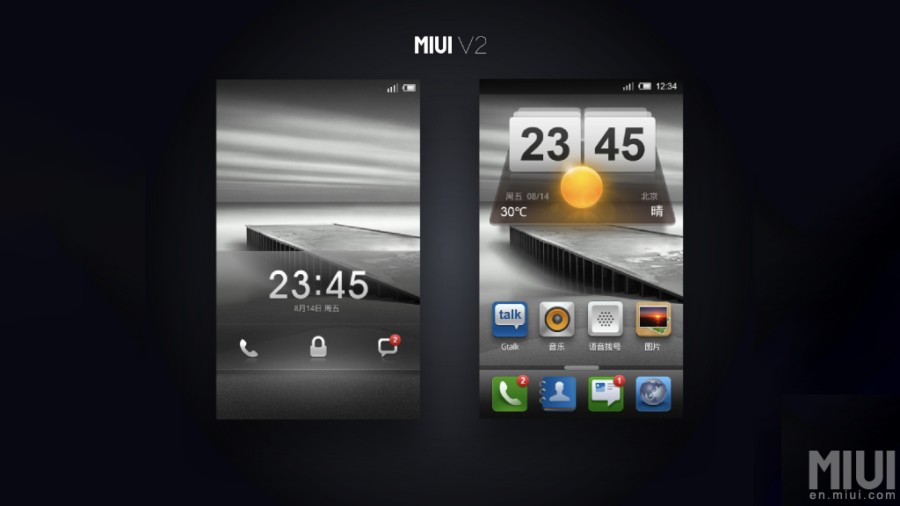
A little later MIUI V2 came out and on Android 2.3. Perhaps, with this release, a more massive distribution of the system began, if this can be said about custom firmware, which is usually installed only by a few enthusiasts. The system was loved for its many themes and the ability to combine them, convenient functions and small useful 'tricks', such as displaying the number of missed calls on the 'dialer' icon and a standard file manager.
Here you can see how the system MIUI has changed from the first to the eighth version.
So, Xiaomi has already become a popular company in narrow circles of people, MIUI had a user base of 500 thousand. And the founders of the company probably had a question of what to do next. The solution turned out to be obvious.
Start of smartphone production
On August 16, 2011, the company Xiaomi organized a small event, the so-called meetup for fans, but there were also journalists. It is difficult to tell from the photographs how many people came, but there were many of them.
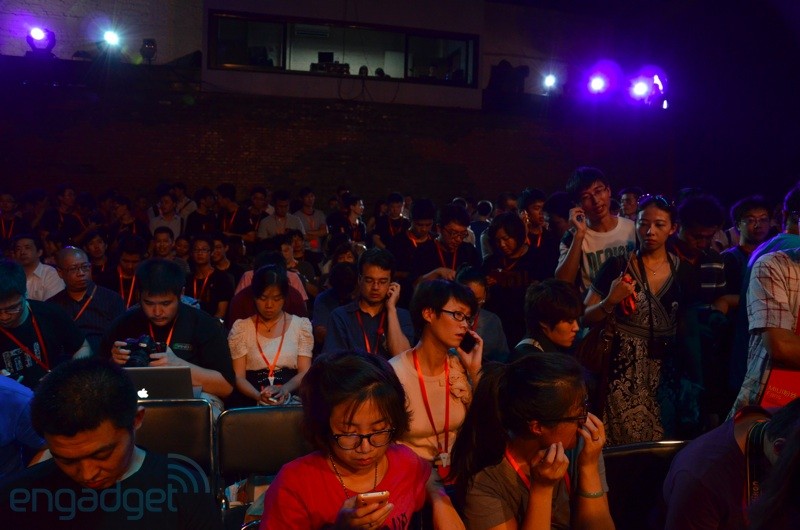
Photo: Engadget
At the presentation, the company announced the first smartphone Xiaomi Phone (Mi1 or Mi-One). The director of the company emphasized that their smartphone is equipped with a large 1930 mAh battery and will actually work for two days on a single charge, while competitors put 1400-1500 mAh batteries.
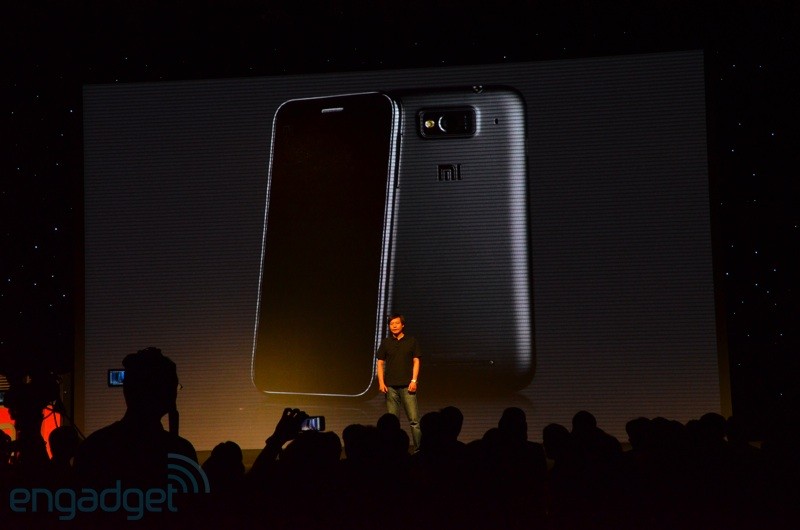
Photo: Engadget
The rest of the characteristics were excellent for that time: a 4-inch screen from Sharp with a resolution of 480 × 854 pixels, an 8 megapixel main camera with an F2.4 lens and a Qualcomm MSM8260 dual-core processor at a frequency of up to 1.5 GHz, as well as 4 GB constant and 1 GB of RAM.
At the presentation, they did not forget to play a trick on the company Apple and the loss of the signal in iPhone 4 with a certain grip.
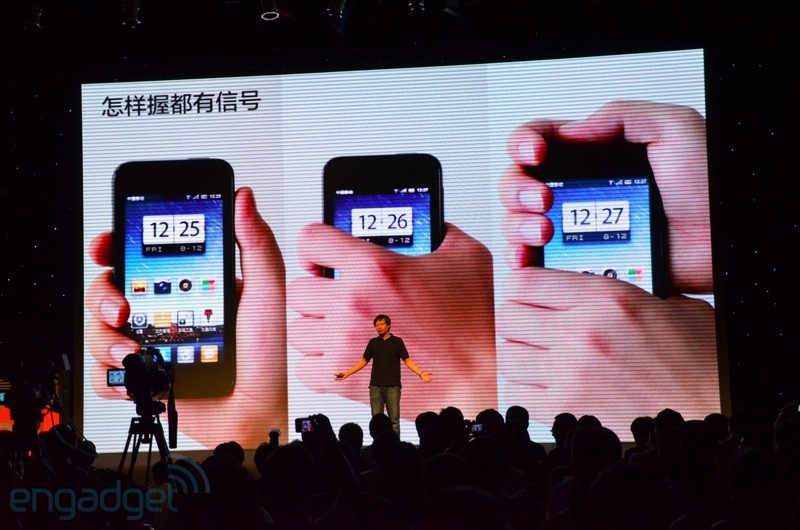
Photo: Engadget
But the smartphone was loved not for its characteristics, but for a reasonable balance between characteristics and price. By pre-order, the base model was sold at a price of about $ 310, we recall the course 'for thirty' and we get a flagship smartphone cheaper than 10 thousand rubles. Although in Russia Xiaomi Phone was not so easy to get, and the price was much higher.
Also Xiaomi Phone pleased users with pleasant and useful little things. For example, there was room in the smartphone's memory for additional firmware, so the owner could try updates MIUI or custom from other developers without a chance to stay with an inoperative device. The smartphone even had GLONASS, which at that time was not installed in all flagships. The journalist Engadget even joked in a report from the event that Russian President Dmitry Medvedev will be able to navigate his country well while updating his Twitter.
The model turned out to be successful, despite the fact that it was not sold at first through regular stores, but pre-orders were collected. In the first 34 hours after the start of sales, 300 thousand pre-orders were collected. For the first smartphone, these are good results, but far from fantastic, given that users did not pay money, but only booked a queue for a purchase. Smartphones began to be delivered only in October and in small batches.
The first reviews from specialized publications were positive. Here's a quote from Engadget's smartphone review:
We're surprised at how a Chinese startup can reach us – the headquarters tour Meizu has already amazed us, but the company's ambition Xiaomi is taking it to the next level, trying to show that powerful smartphones can be accessible and more intuitive.
Xiaomi Mi 2 (Mi-Two) has become a truly popular smartphone. It was introduced exactly one year after the first smartphone was announced.
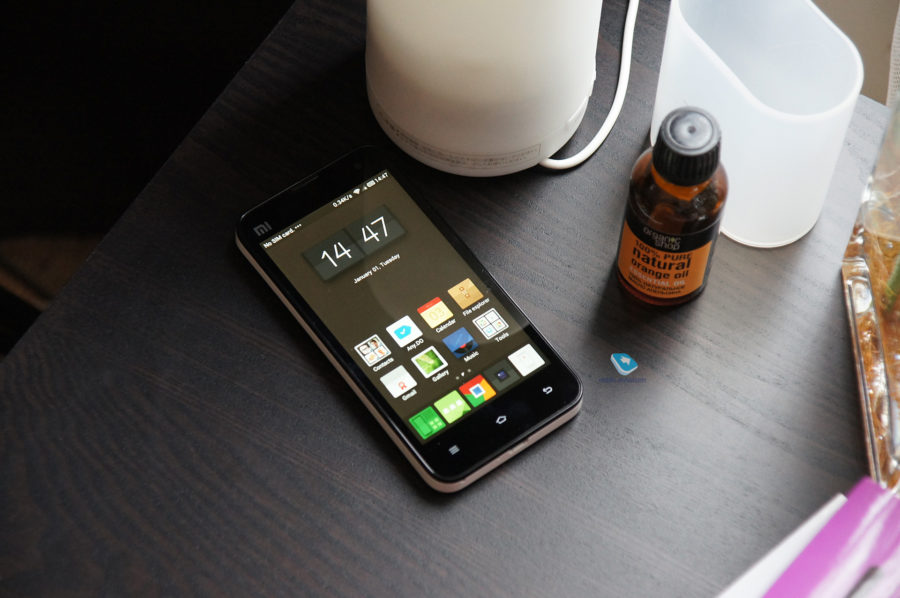
Xiaomi Mi 2 continued the idea of its predecessor: an inexpensive smartphone with cool features and lots of possibilities for geeks. In the basic modification, it cost the same – 1999 yuan, still about 10 thousand rubles at the exchange rate of that time.
I advise you to read the review Xiaomi Mi 2 from Artem Lutfullin.
The first batch of 50 thousand smartphones Xiaomi Mi 2 was sold out in just 3 minutes. It was a success.
In mid-January 2013, the retailer Mobicity announced that it would officially ship the smartphone Xiaomi Mi 2 to Britain and Australia. Prior to this, smartphones Xiaomi were officially sold only in China.
In April of the same year, the presentation of two modifications of the second model took place – the more powerful Xiaomi Mi 2S and the more affordable Mi2A. This line finally consolidated the company's success, and already in September they reported 10 million units sold Xiaomi Mi 2, Mi2A and Mi2S.
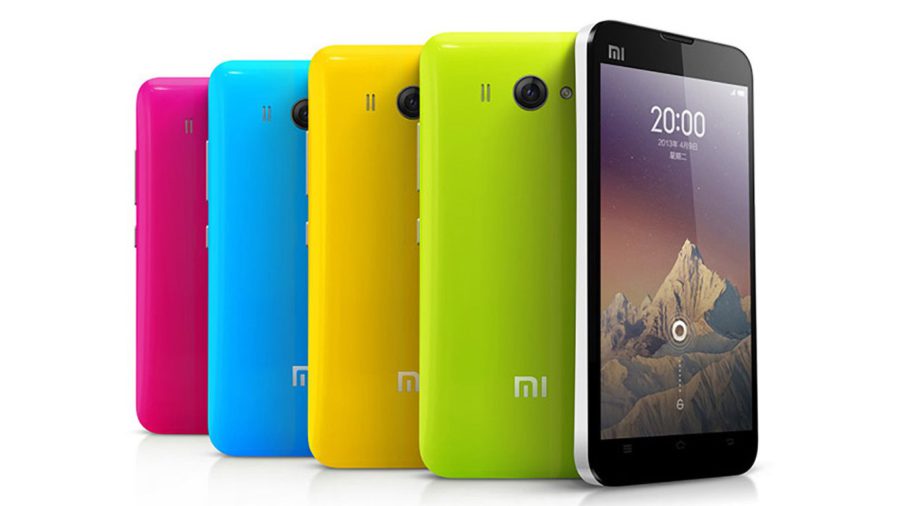
Xiaomi Mi 2 has become perhaps the most iconic device in history Xiaomi. It was from its launch that the company began to grow and develop. In the summer of 2017, Lei Jun, director of Xiaomi, announced that 5 million people still use Mi2 and Mi2S smartphones and they will receive an update to the new system MIUI 9. Even iPhone 5, which came out at about the same time as Mi2, did not receive the update to iOS 11.
Successful entry into the mobile market has allowed the director Xiaomi, Lei Jun, to become one of the most successful entrepreneurs in China in the future. According to Forbes, at the beginning of 2018, his fortune is estimated at $ 7 billion.
Lei Jun
He is called the 'Chinese Steve Jobs', although there is nothing in common in their biographies. Lei Jun himself told many times how he was inspired by the example of Steve Jobs. On stage, Lei likes to dress in simple clothes and have a measured conversation with the audience, as does Steve. But this is where all the similarities end, if you do not take into account that each of them founded a large and successful company.
If Apple was created in a small garage, then Xiaomi is a project with a rational approach from an already successful businessman. And Xiaomi is a much more open company to consumers.
Lei Jun was born in 1969 in a small province in eastern China. At school he studied secondary, in 1991 he graduated from the university with a bachelor's degree in computer science. There he became interested in programming and computer technology.
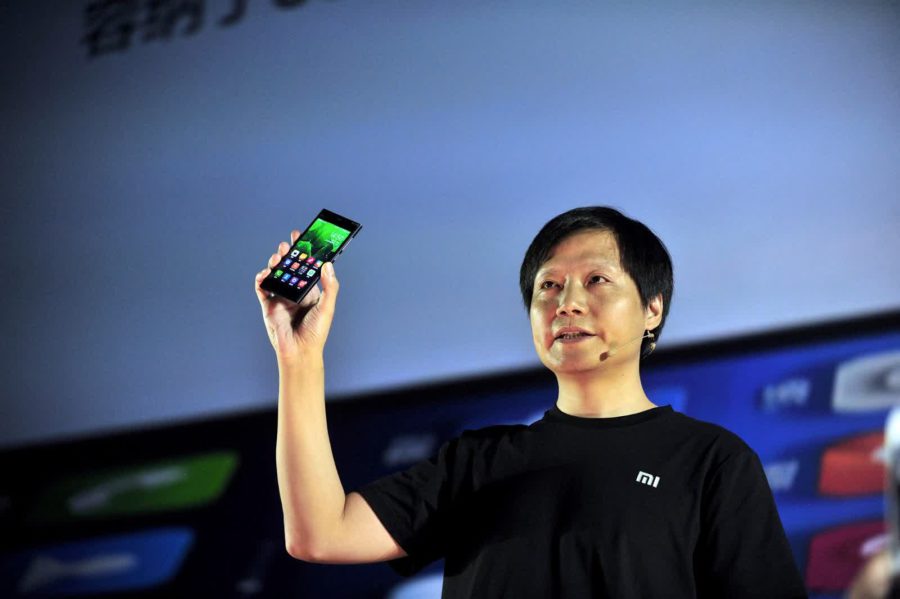
At one technology exhibition in Beijing, he met Qiu Bojun, vice president of Kingsoft, now a famous Chinese software manufacturer, and then it employed 6 people. Lei received an invitation to dinner with the vice president, where he was offered a job as an engineer. Already in 1998, Lei will receive the post of CEO of Kingsoft. In parallel with his main job, he developed the Joyo.com website with books, films and music. A little later, it was bought Amazon for $ 75 million.
In 2007, Kingsoft went public, and Lei Jun became a successful businessman and novice investor. Before creating Xiaomi, he invested in 20 projects, almost all of them work on the Internet.
Apparently, Lei Jun himself does not like to talk about himself, or there were no particularly significant events in his life that turned his life upside down. I see a calculating person who gradually developed, did not stay long on boring work, and quite successfully predicted what would be in demand in the future. In general, he is a hardworking and calculating person – perhaps this is what connects Lei Jun and Steve Jobs.
A more detailed biography of Lei Jun can be read on another website.
Development and new markets
The next step for the company was the announcement of the TV set on September 5, 2013, which received a 47-inch display with 3D and a SmartTV system based on Android. Another highlight is the addition of Hugo Barr to Xiaomi as vice president. In the past, he worked for Google on Android and was the face of the system at all conferences.
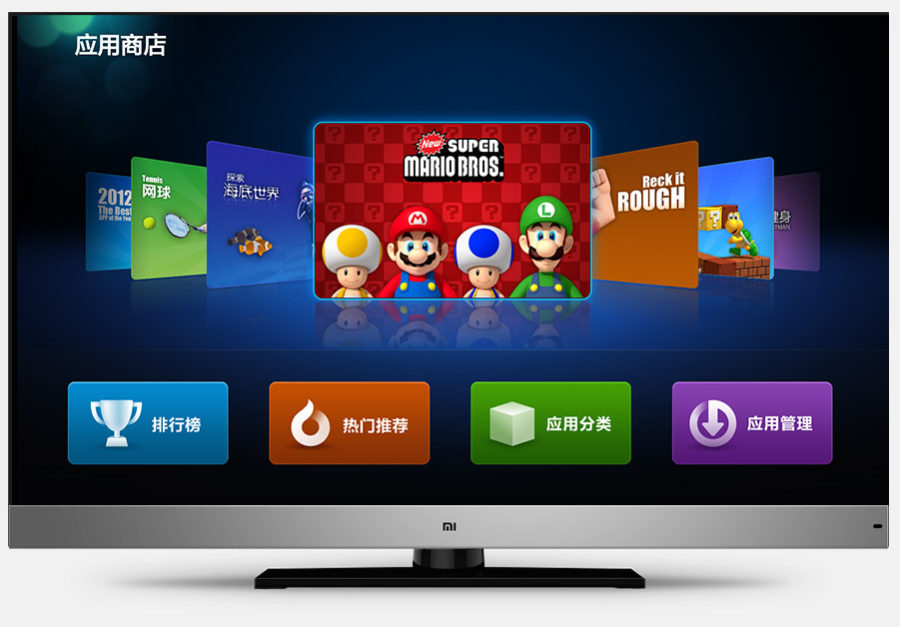
Also in September, a new flagship Xiaomi Mi 3 was introduced, which allowed the company to further increase sales. As a result, in 2013, they sold 18.7 million devices, but this is only the beginning of rapid growth.
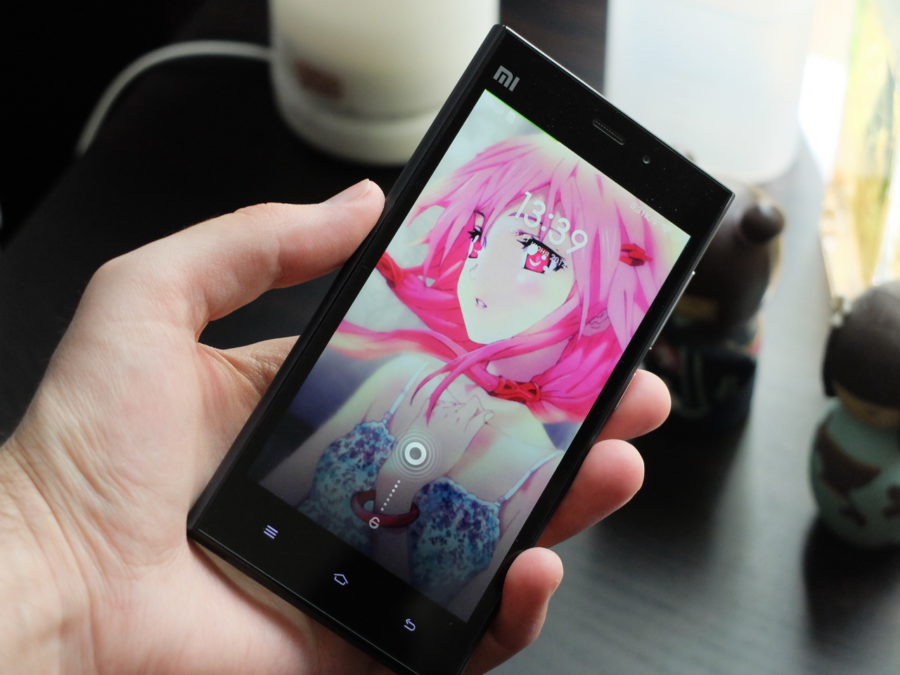
Xiaomi Mi 3
At this point, it is worth paying more attention to the company's business model. Lei Jun constantly emphasizes that smartphones Xiaomi are sold at almost cost price, but without sacrificing quality and performance. They were helped in this by the successful scheme of selling smartphones in small batches using online stores – this way it was possible to keep costs to a minimum and the goods did not linger in warehouses. The company did not plan to make money on hardware, but on the sale of applications and online services. However, at that time they remained hostages of the smartphone business – it brought in 94% of the profits. That is, the slightest mistake and a blow to the reputation Xiaomi as a smartphone manufacturer could destroy the company. This is how the development of new markets began, although it is more like a huge number of shots in the sky to find a further development path.
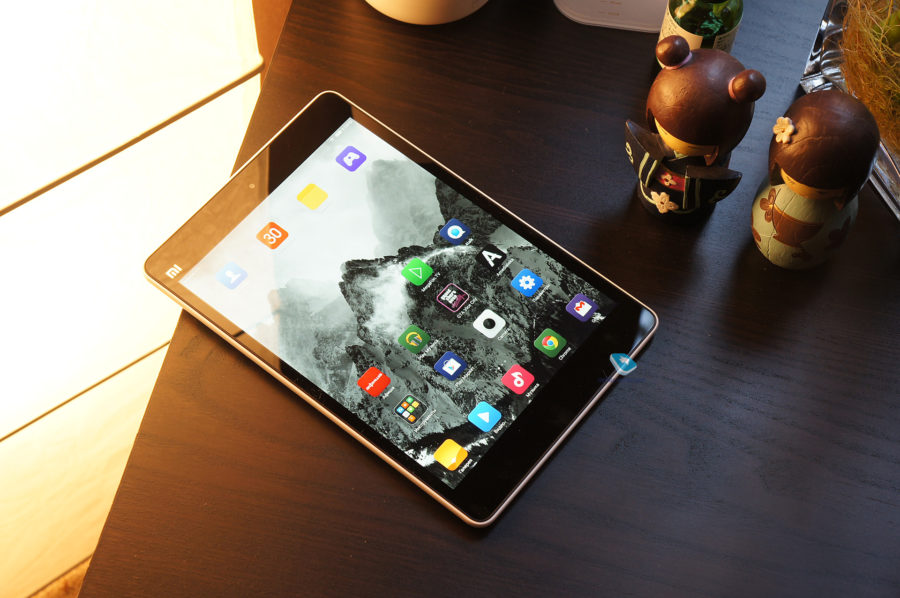
Mi Pad
In 2014 Xiaomi she began to sell routers, set-top boxes, air purifiers, portable batteries and other small appliances and accessories, in parallel with this, she expands the line of smartphones to an unimaginable number, releases MIUI 6 and announces the Mi Pad. At that moment, the tablet market began to gradually decline, so it was not possible to find salvation in it.
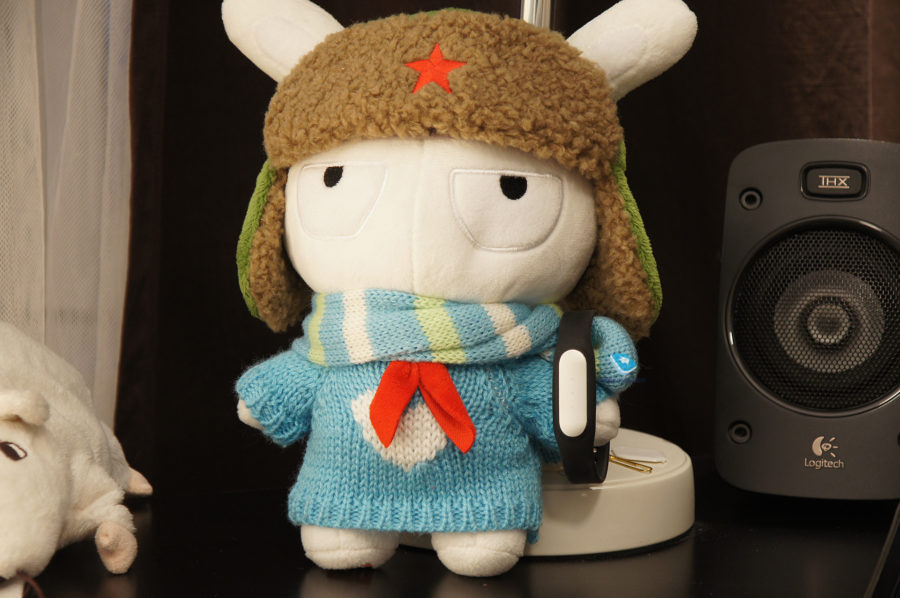
Mi Band and symbol Xiaomi – a hare in a hat with earflaps
The Mi Band fitness bracelet has become a real bestseller. The company has managed to release the smartest gadget at an astoundingly low price and capture the emerging market for wearable electronics, second only to the already established leader Fitbit.
Interesting thing in 2014: Russian businessman Alisher Usmanov confirmed that he invested in the company Xiaomi – the amount of investment is not disclosed. Also among the investors is Yuri Milner, the former co-founder and CEO of Mail.Ru. And in the fall of 2014, the JD.com online store began trading the flagship Xiaomi Mi 4 in Russia. Back in the beginning of the year, the company opened its first Mi Home retail store in Beijing.
Xiaomi at the end of the 4th quarter of 2014 ranked fifth among global smartphone manufacturers with a market share of 4.42% and became the absolute leader in shipments in China with a share of 13.7% (IDC data). At the same time Xiaomi fulfilled the ambitious goal of selling 60 million smartphones in 2014. The company has achieved such results in less than 4 years of work.
Reducing the pace
2015 became a calmer year for the company. It presented the first Yi-branded action camera, new smartphones in the Redmi, Redmi Note and Mi Note lines and several modifications of the Mi4 flagship, as well as a segway, the new budget TV Mi TV 2. Mi Pad 2 and many small appliances such as a water tester, wireless speaker and gamepad.
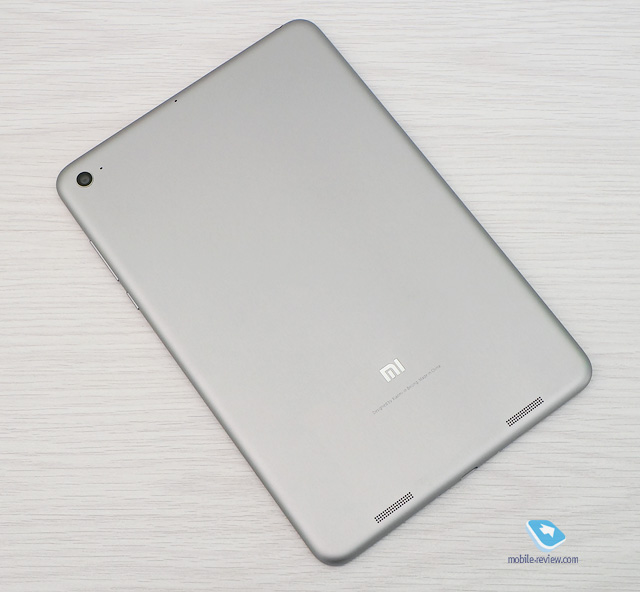
The year became more significant in terms of expanding the sales market. Xiaomi entered the Indian market through two of the largest local online stores. Back in 2015 Xiaomi opened its own production in Brazil for a smartphone Redmi 2 – the company first assembled devices outside of China.
In February 2015, a message appeared that smartphones Xiaomi would be sold in the US by the US Mobile operator. Later it turned out that they simply import devices from China as they are, without support for many LTE frequencies and local services. Xiaomi explained that US Mobile is not an official distributor of their smartphones and the company does not plan to sell devices in the United States at all.
But in June 2015, the Marvel Distribution company officially brought the Mi Pad to Russia at a price of 17,990 rubles. It was not a bad price tag considering that it could be bought for 13-14 thousand in Chinese online stores.
The last quarter of 2015 was closed with a global market share of 18.2% in fifth place.
Difficult Russian market
In 2016, a significant event took place for Russians. Introduced the next flagship Mi5, the 'smart' bike QiCycle, the line of Mi Notebooks and the smartphone Redmi Pro.
In May 2016, sales of the smartphone Xiaomi Mi 4i began through the online stores Svyaznoy and Euroset. Later, other models appeared in online retail. Then Xiaomi finally realized (or explained to her) that a business strategy with online sales in small batches does not work in other markets. So she had to adapt. And only in October, the company, with the help of the new official distributor Smart Orange, opened the first branded offline store in Moscow. This is how the gradual attempts to conquer the Russian market began.
It cannot be said that Russians warmly received the appearance of 'white' smartphones Xiaomi in Russia. Many complained about the high markup, for example, at Xiaomi Mi 5: in China it costs 1999 yuan, or about 20 thousand rubles at the exchange rate of that time, or 35 thousand rubles in the official Russian retail. Big difference.
At the same time, I will note a decrease in growth and a strong loss of market share Xiaomi in the 4th quarter of 2016 – the company did not even enter the top five world leaders (IDC data).
2017 started even worse for Xiaomi in Russia. Apparently, Xiaomi and the Russian distributor Smart Orange were dissatisfied with the sales of smartphones in Russia and took drastic measures.
In April, complaints began to appear on thematic forums and social networks that the company's equipment Xiaomi, purchased from a Chinese online store, did not pass customs. Buyers received letters of approximately the same content: it is a counterfeit product that violates the rights of Smart Orange. So a small war with the 'gray' devices began.
Later it turned out that customs officials prohibited the import of smartphones Xiaomi after the request of the Smart Orange company, which owns the rights to the brand in Russia. A huge confusion has arisen: some lawyers say that the actions of the distributor are completely legal, while others say that the customs cannot recognize the goods as counterfeit without a court decision. But the fact remains – many buyers did not receive their devices.
For a more detailed analysis of the situation, see Eldar Murtazin's spillikins at number 431.
Disgruntled buyers filed a petition on Change.org to management Xiaomi. Complaints include points that Smart Orange sells smartphones at “overpriced” and that such a policy could negatively affect the company's reputation. A little later it turned out that the management Xiaomi was already aware of the situation, and they, together with the distributor, were trying to solve the problem.
The situation was resolved only at the beginning of July, when the Federal Customs Service announced the receipt of an official appeal from the copyright holder (Smart Orange), which authorized the piece import of devices under the brand Xiaomi into Russia by mail.
The American market Xiaomi was not captured. And the company's management constantly claims that the United States is not a priority for them. Therefore, on mi.com, only accessories and small appliances are sold there.
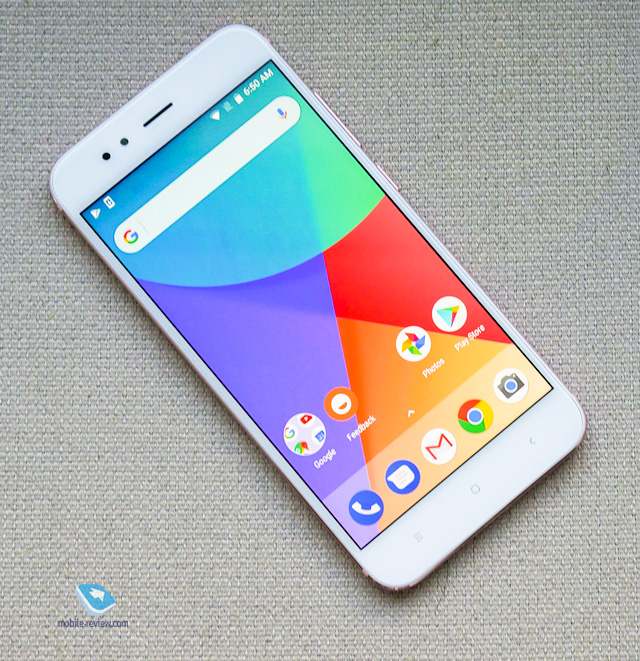
Xiaomi Mi A1
But in the summer of 2017, the company introduced the first smartphone without MIUI – Xiaomi Mi A1. In fact, this is the Mi5X model, released jointly with Google within the project Android One. The goal of the project is to create a line of affordable smartphones with clean Android. From the unusual results of cooperation, I can note the release of the official firmware Windows 10 Mobile for Xiaomi Mi 4 and Mi5.
Company now
The range of devices and accessories Xiaomi is impossible to count on your fingers. It may seem that the company has released all sorts of gadgets: headphones, scales, air humidifiers, kettles, bags, backpacks and suitcases, surveillance cameras, a huge line of smart home devices with motion sensors, temperature sensors, and so on, and so on and so on. Also Xiaomi has a variety of subsidiaries that produce smart speakers and various electric screwdrivers.
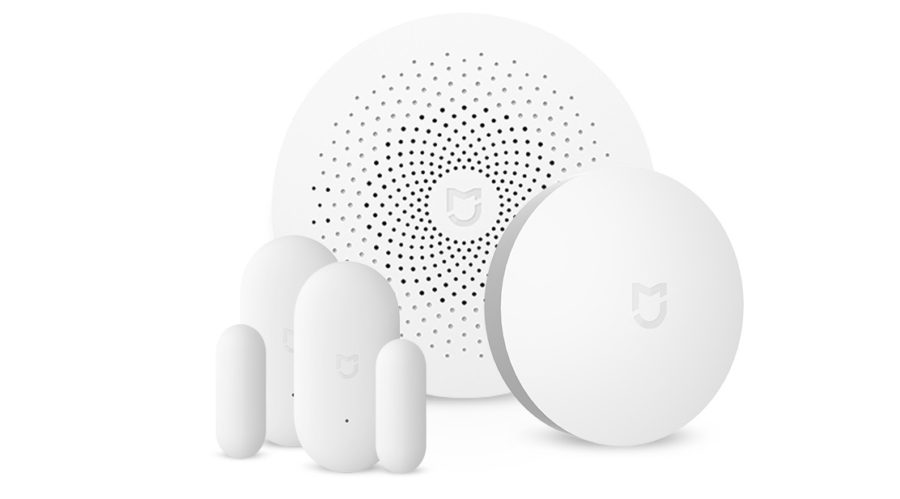
Smart home from Xiaomi
Since 2011, it has released nearly 50 smartphones, three tablets and several laptops. And he is definitely not going to stop. According to the results of the third quarter of 2017, the company returned to the top five among global manufacturers with a market share of 7.4% – a year-on-year growth of 102%. A very good result.
The company operates effectively not only in China, but also feels confident in the rather large Indian market.
Many do not know that Xiaomi has its own crowdfunding platform Youpin.mi.com – an analogue of the foreign Kickstarter. There, any small company can open a fundraiser for a new device or accessory. You can find many interesting things, such as an e-cigarette with vitamins or a smart door lock with a fingerprint reader. But the site only works in Chinese.
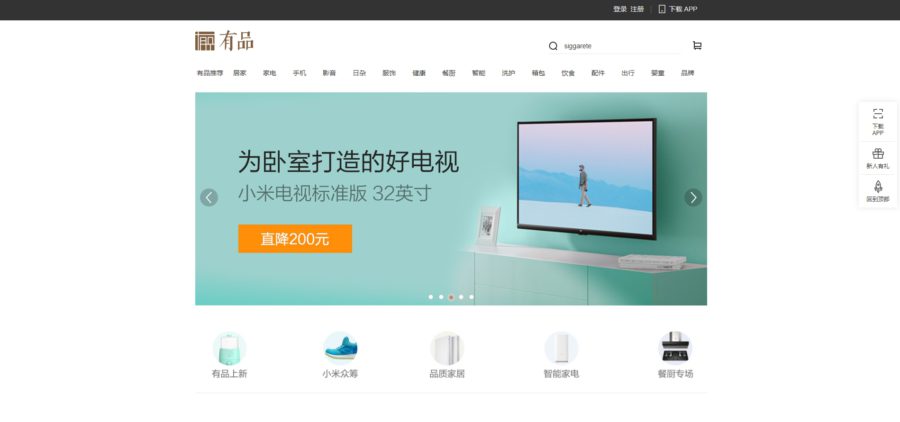
In January 2017, Hugo Barra left the company Xiaomi, where he worked for more than three years, and took a job at Facebook as the head of the Oculus virtual reality team.
In Russia Xiaomi he feels rather well, despite the scandal with the customs. In July 2017, it ranked fifth with a market share of 4.4%. In mid-November, the first convenience store Xiaomi opened in Moscow, and they announced the start of sales of the frameless flagship Mi MIX 2, an action camera, new scales and a smart lamp.
Conclusion
The company Xiaomi has a huge fan base as well as a big hater base. Each side has a right to exist, because the company's products are far from perfect. But one cannot deny the fact that this is a significant player in the market with its own principles, characteristics and history.
Thanks for attention.
